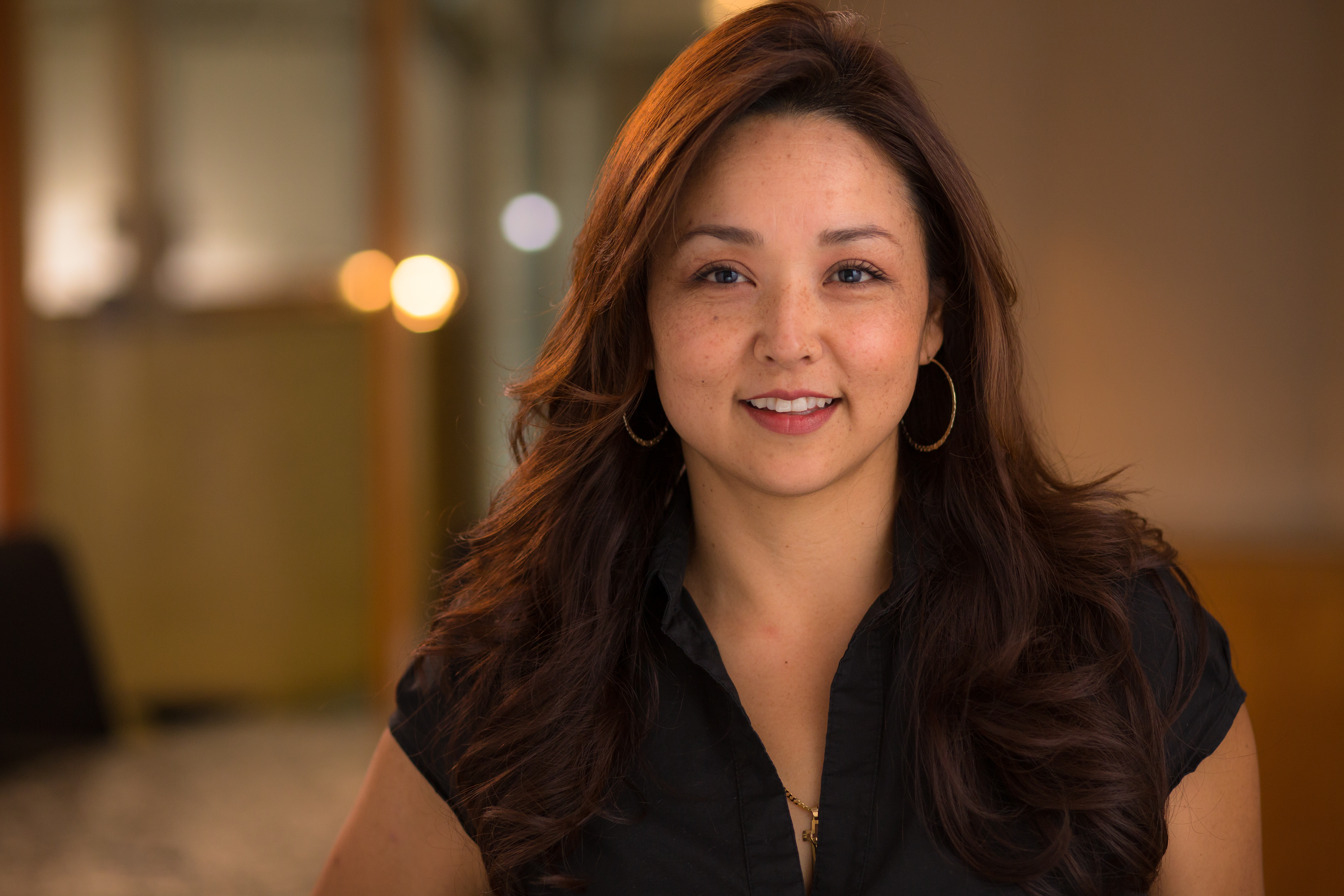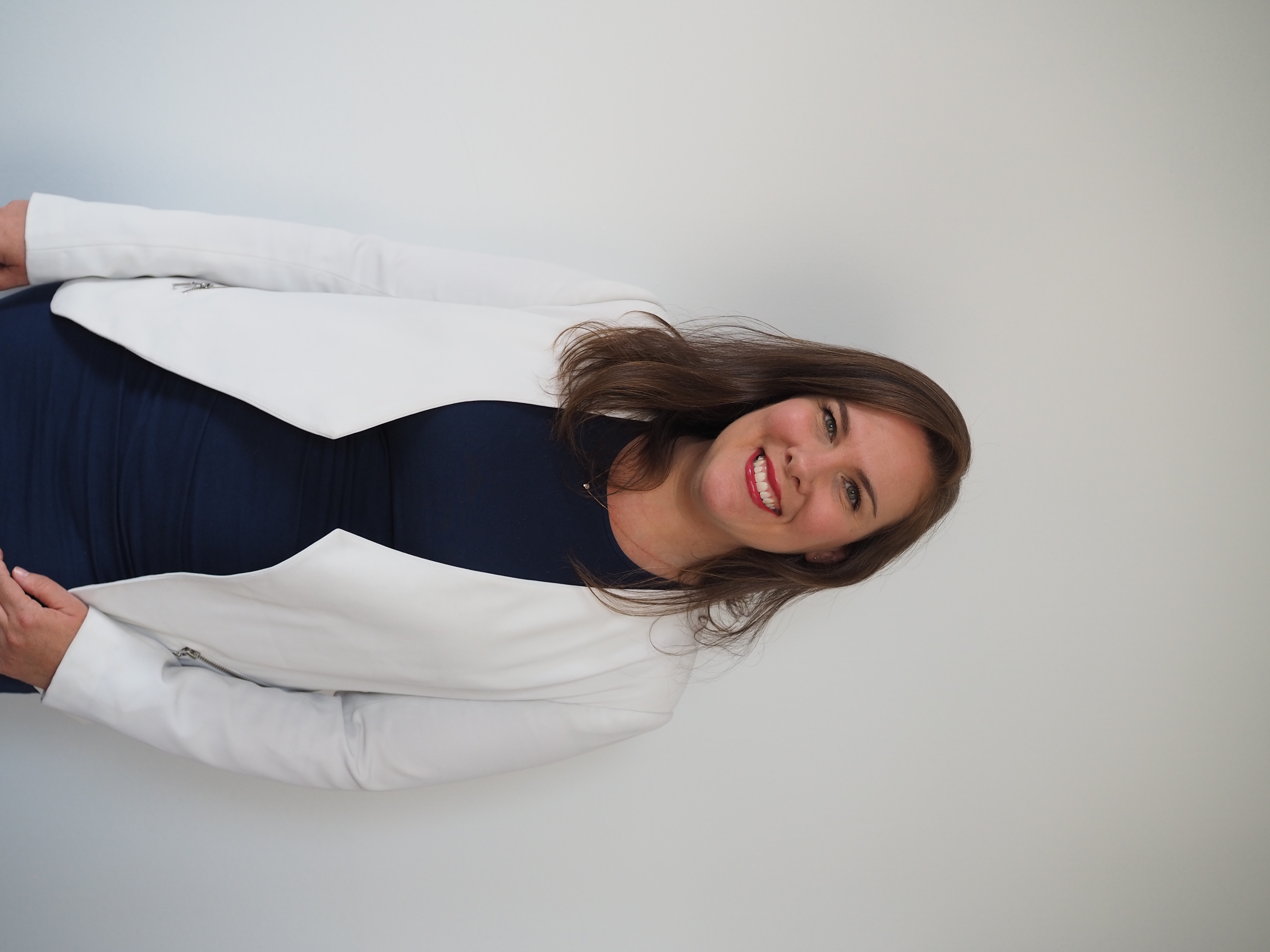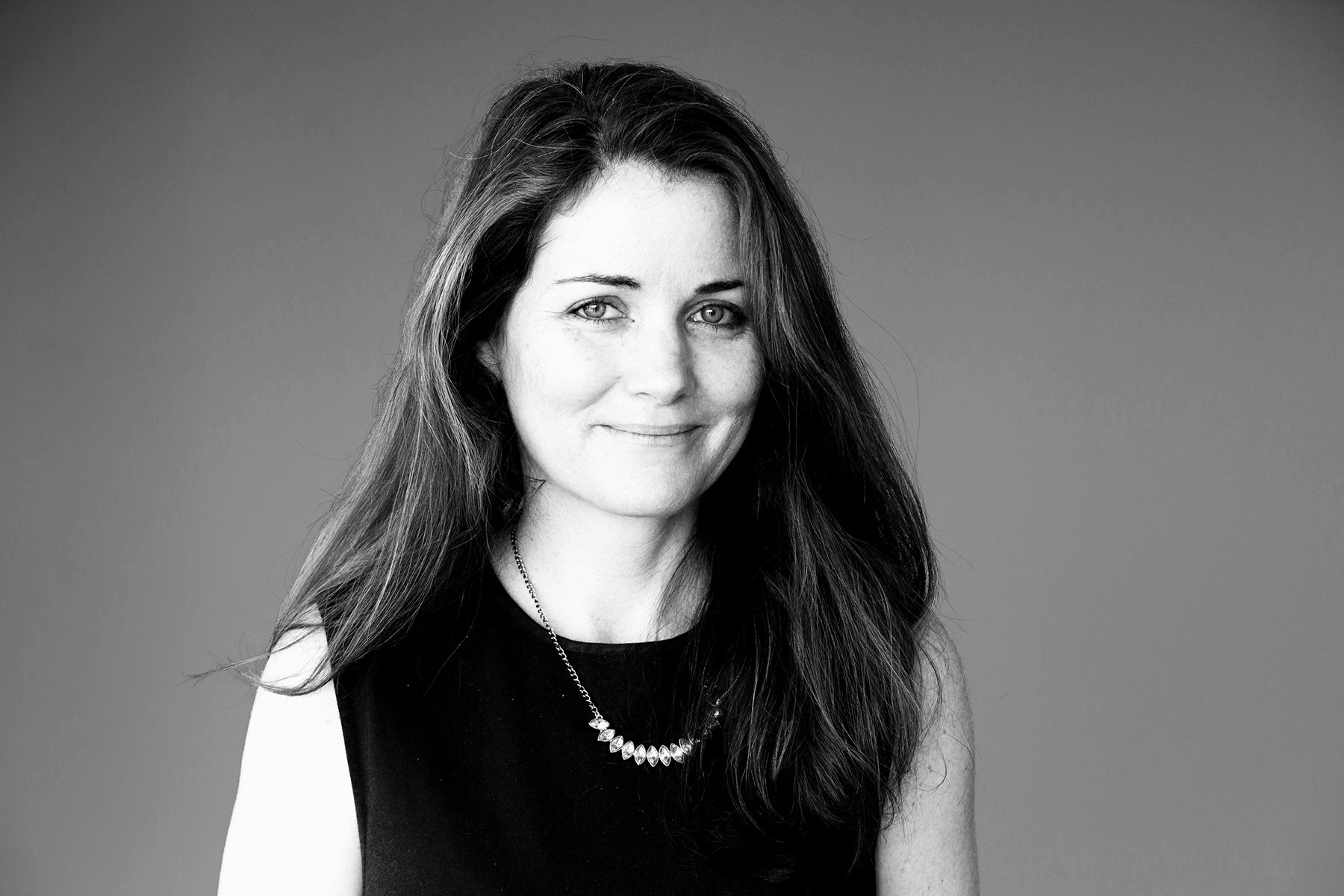Top Planners Find Audience Buying An Appealing Approach

Why This Matters: Media planners are enthused about TV’s shift toward selling data-driven segments based on viewer attitudes and buying behavior.
Audience buying is giving top media planners and strategists an effective tactic for reaching consumer targets using television.
The planners and strategists at media agencies face challenges finding ways to get their clients’ marketing messages to consumers at a time when ratings are falling and viewership is fragmenting as people cut the cord and tune into proliferating over-the-top and streaming options.
Their decisions about the most effective ways to help move product off the shelves help determine how billions of marketing dollars will be spent.
B&C sought out the top planners and strategists at some of the biggest agencies and asked them about some of the key issues affecting the media environment.
Most of them expressed enthusiasm for the way many networks are shifting from selling commercials based on traditional demographic ratings based on the age and gender of viewers to new data-driven segments based on consumer attitudes and buying behavior.
They also shared their thoughts about addressable advertising, branded content, commercial clutter and other important topics.
Broadcasting & Cable Newsletter
The smarter way to stay on top of broadcasting and cable industry. Sign up below
B&C: Is TV audience buying something that is changing the way you think about campaigns and how to reach consumers?
Lauren Amster, senior partner, account director, MediaCom: Absolutely. We know the power of the TV commercial to drive brand growth. What’s been missing until the past decade is the ability to identify more focused audiences, and to use data to find those audiences and target them on a household level. With the advancements in TV audience buying, we can realize the power of video plus the power of data to deliver a precise message in a proven environment.
Nick Bernard, senior partner, Mindshare: Absolutely. As audience development becomes more advanced in the digital space, the expectation is that we use the same level of specificity, where possible, to reach priority audiences. The challenge is how to merge those audience-buying opportunities with inventory that can really only get purchased through more of a demo buy. The ways of planning, managing and optimizing for unduplicated reach and frequency are still something that the industry is catching up to. The tools available today for planning still have large holes where walled gardens or highly modeled (more unstable) data are used. Until those challenges are solved, we need to continue to push the industry through test-and-learns to identify opportunities that drive our clients’ business.
Daniel Bueckman, executive director, Hearts & Science: TV audience buying is one more tool we now have in our tool kit as strategists. Every marketer is trying to maximize their ROI [return on investment] by reaching the right consumer in the right context and TV audience buying is another capability that we now consider. Like with any platform, channel or partner, we need to weigh the pros and cons based on the campaign objective and our historical learning. It’s important that we’re applying an audience dataset that is valuable to the client, and delivering a consistent and transparent form of measurement.
Michele Donati, senior VP, managing director, Horizon Media: Yes, absolutely! We’ve long been proponents of audience-based buying at Horizon. I think getting our clients’ messages in front of those who are most likely to convert or take action is a key component of moving towards business outcome-based deals.
Wanda Kato, managing director, OMD, Los Angeles: For sure, TV audience buying is changing the way we think about reaching consumers. For many entertainment clients, however, this does not mean letting go of contextual alignment. Reaching the right person and only the right person is as important as how and where. Many of my clients are used to thinking about where (what networks, what shows) they will be running in first, but with audience buying, we reprioritize our options of where to be earlier in the process, allowing us to minimize waste and manage reach and frequencies more effectively across a schedule.
Amari Pocock, senior VP of media planning, Essence: Thinking about campaigns and how to reach customers today requires a shift to holistic thinkinginclusive of, but not limited just to, TV audience buying. The options available to consumers, from whom or how content is made available, to the variety of screens, means all brands need to consider both how plans are delivering buying targets, as well as how they then fill the gaps left with other channels or tactics.
Julie Schiro, senior VP and group account director, Spark Foundry: Audience buying is something we continually evaluate as solutions progress in the marketplace. It all comes down to the specific data sets and methodology — whether that methodology is being utilized for pre-planning or in-market optimization, and how it matches up to our own proprietary tools. If it’s a data layer we are already employing elsewhere, especially when a cost premium is involved, that’s something we’ll need to evaluate very closely. The ultimate goal is fluidity of approach across platforms to mirror consumer consumption. While work still needs to be done, every year we get a little closer.
Nick Vernola, strategy director, PHD Media Worldwide: It’s changing the way we are able to buy, but hopefully not the way we all think about planning our campaigns. ‘Fishing where the fish are’ is not a new concept, just sort of a new buying model. Being able to plan to strategically targeted reach, optimal response and minimal waste is an exciting capability to be able to take advantage of.
B&C: Can you mount addressable TV advertising campaigns at scale now? Will the Comcast-Charter Communications-Cox Communications ‘On Addressable’ initiative help? What role will over-the-top and connected TV play in mounting addressable campaigns?
Amster: The scale of addressable TV has grown steadily to the point where I’d no longer consider it a niche or up-and-coming tactic. The changes happening, such as the Comcast-Charter-Cox On Addressable initiative, will bring structure to the way we think about and buy addressable, making it easier for brands to adopt it seamlessly as a core part of their video strategies. And the ability to extend addressable campaigns across OTT/connected TV as well as linear environments further demonstrates the scale and versatility of the medium in being able to deliver the same targeted messaging at scale, regardless of how that consumer is subscribing to their entertainment services.
Bernard: This depends on a lot of factors, like the size of your audience and their video usage, but often addressable alone doesn’t achieve the requisite scale (this varies, and depends on the client). Even with the Comcast initiative, the underlying dynamics are changing. With year-over-year ratings erosion, particularly against younger demographics, addressable really adds precision to a shrinking audience. But again, this depends entirely on the target. We, as an agency, have definitely had some standout successes in the addressable space.
As to the role of OTT and connected TV: They’re part of a larger video ecosystem that can tap into far more advanced data signals. Right now, there is tremendous fragmentation in the OTT and connected TV space. I’d expect that over the next couple of years, there will be some merging into media conglomerates like what AT&T is doing now. At that point, it becomes more feasible to use all of this technology more seamlessly to fill any gaps in reaching the desired audience. At the end of the day, it comes back to getting to a place where there is the same level of visibility both in the planning/buying and delivery.
Bueckman: There is more scale in addressable TV than there ever has been, and that’s a good thing. However, we still have a ways to go until we reach the end zone. The On Addressable initiative helps with inventory scale, but we still need to unlock broadcast inventory to maximize the scale advertisers desire. However, given the last couple of upfront marketplaces, there’s not much incentive for networks to open their inventory right now. OTT and CTV [connected TV] can play a really big role in adding scale to addressable TV, but the fragmentation of partners makes it a challenge when you’re trying to drive scale through a consistent use of audience data and a consistent set of metrics. Depending on the approach you’re taking, you’re looking at multiple audience data sets, reporting environments, terms and conditions, privacy and information agreements, etc.
Donati: Yes, addressable TV is scalable. Between AT&T, Dish Network, Comcast, etc., there is pretty comprehensive national coverage and that’s just in linear and [set-top-box] VOD. OTT and connected TV are helping make that national coverage more seamless to execute and mirrors shifts in viewing behavior from live to on-demand content. The digital distribution of OTT content also enables even more targeted messaging and the ability to optimize more quickly than in traditional linear addressable efforts.
Kato: With over 60 million addressable households available, I would say the scale is there. Although, depending on your target and data needs, it may be hard to stitch together the right solution for your client. Provider consolidation will definitely facilitate access. Comcast, Charter and Cox pooling data and inventory within NCC and AT&T’s plans to integrate Altice households within their national addressable-TV offering will both facilitate that scale. IPTV (OTT and CTV) offer another way to deploy data-driven advanced TV solutions. We think about all of these options and use a combination of them to continually test and learn and optimize our campaigns.
Pocock: There is generally opportunity to scale addressable TV campaigns today, but the audiences a brand are trying to find are really the critical factor in answering that question on a campaign level. As with all addressable or targetable channels, certain audience groups are simply more populous than others. For addressable TV, the potential value exchange of finding the right person and being able to customize the message/communications to them, even at more limited scale, can be worth the trade-offs. As per the thinking above, OTT and connected TV are becoming inseparable from the conversation around video strategy and planning, inclusive of addressable. All three channels specifically represent an opportunity to find the right audience via the large-screen format, and the focus on their partnership should be the most effective combination of media to deliver the audience and outcomes a brand desires, instead of the mechanism through which they are delivered.
Schiro: Consolidation and evolution in this space are expected as the race to own more addressable impressions continues. While our specific target groups will always be a small subset of impressions available, it does give us a larger landscape in which to slice these targets, and that is a positive trend. Addressable will continue to play an important role for key campaigns but will still likely be used in combination with linear that for broad reach, pending specific campaign KPIs. Initiatives such as On Addressable or Project OAR are helpful in that they are pushing the industry toward more consistent and unified addressable measurement.
Vernola: The innovation is exciting and the momentum is there, but scale is still an issue where frequency and targeting are concerned. Often the driving force behind layers of addressable on our plans is a highly-targeted objective, and scale is still challenging without keeping the audience fairly broad and forgiving a ton of frequency.
B&C: We hear a lot about marketing dollars moving from YouTube and Facebook back to TV. Are you advising clients to use more TV and if so, why? At a time when the TV industry is seeking scale, what should smaller media companies do?
Amster: TV’s success at driving brand metrics has been proven time and time again. But audiences are fragmenting, and have been for many years now. It’s not about moving dollars back and forth between channels, but finding the right balance of multiple channels to deliver the optimal mix of reach, impact, and precision targeting that’s needed to meet your brand’s objectives. I don’t see YouTube, Facebook or TV going away anytime soon. What I think we’ll see is the tides turning to a more balanced media plan that acknowledges consumers are not utilizing just one channel to quench their passion for video content.
Bernard: Budget change is a reality in this industry and a media budget should never be a ‘given’ for any channel. If it is, then we (media planners) have failed at our jobs. We should always be starting with the consumer and their usage, then planning based on appropriate levels for the objective. We are seeing that both YouTube and Facebook are viable video platforms, but that doesn’t mean it is at the expense of TV. Ultimately, it means that broadly, video budgets need to grow to meet the needs in these spaces, particularly when you factor inflation into the equation.
With clients, we often talk about the overall rise of time spent with media, while at the same time the ways in which [consumers] access that content has never been more fragmented. Just one example of this is the rise of apps used help manage all of your paid video subscriptions. My point is, Facebook and YouTube are just two examples, but they aren’t alone in the video landscape.
As to advice for smaller media companies: Scale is great, but it only gets you so far because there is a finite amount of linear inventory. When you are smaller, you have to do what scale can’t; you need to be nimbler, more culturally connected and ultimately more provocative. This means moving at the speed of culture to tap into either a cultural insight or moment. This kind of provocation pays off in dividends outside of paid media in the way it generates talk value.
Bueckman: We advise our clients to place their dollars where they will get the best return on investment and where they we believe they achieve their marketing goals. We use our planning utilities and performance inputs to make those recommendations, which are unique for each client. Sometimes that involves placing more dollars into TV and sometimes it doesn’t. We’ve seen positive results with many of our TV-network partners and with YouTube and Facebook, so I don’t think it’s a carte blanche shift from one of these areas to another. It’s more about the consistent optimization to maximize ROI. Smaller media companies need to compete with their content and with their audiences. If they produce quality brand-safe content and deliver an engaged audience, their scale will increase and advertisers will call.
Donati: We are advising clients to take a platform-agnostic approach, as we always have. We want our clients to invest in channels that will move their business by impacting consumers in the right stages during their decision journey with the right channels to do the job. Our comms planning platform, Infuse — which connects brand performance data with consumer and media effectiveness data — is a big part of this process. Video continues to play a big role in many of our clients’ media plans, but it is video across several platforms. I think smaller media companies can bring relevance to the table, if not a ton of exclusive reach. We can’t underestimate the impact of our clients’ ads being in the right environment at the right time. They can also help build frequency for our plans, which we know is needed for marketers to break through all the clutter.
Kato: Video has increasingly become a pivotal medium for any campaign and the balance between all the different kinds of video is truly customized by client. I have seen it both ways: Clients that go back to more TV and clients that are still getting comfortable with digital video, as concerns over viewability and brand safety are still in the minds of marketers.
Pocock: Overall, I’d say I’m advising clients to spend the most effective next dollar in the video space based on their unique campaign and business objectives. There are always more GRPs [gross ratings points] that can be bought, but is that spend finding incremental reach? Or optimizing your frequency levels, either up or down? Is spending more in TV delivering the younger audiences brands are seeking? The right mix of channels, and therefore the level of spend a brand commits to TV, should always be dependent on and optimized to the amount that will make an impact — both on the brand objectives and on the consumer.
Schiro: I don’t think it’s as linear a story as moving from Facebook and YouTube to TV. There was perhaps a disproportionate shift several years ago in the industry that has right-sized a bit in the past five years as marketers saw the continued need for quick awareness boosts that TV and cross-platform video could provide. Social continues to play a critical role in our marketing mix, but like any other channel, it’s how you utilize the platform to break through in a creative way. Similarly, throwing more spots on TV is not a media strategy in itself, especially with the reality of declining ratings. Creativity and leveraging compelling consumer insights (channel agnostic) continues to be king.
Vernola: I advise my clients to stop thinking too much about TV vs. digital, and vice versa. Digital as a channel is older than adults 18-24, which makes it as ‘traditional’ a channel as TV. People today go home, consume YouTube, Netflix, VOD, live sports, Facebook and on and on, and the next day they tell people they ‘watched TV last night.’ It’s all one experience … the smart advertisers, big or small, are thinking screen-agonistically about video as one channel.
B&C: Is branded content a way to keep viewers engaged with the show and the brand? How do you measure branded content’s impact and value? How are you addressing commercial clutter?
Amster: Branded content is a great way to connect your consumer with your brand in a way that can feel less transactional (you watch my ad, I’ll let you watch your content) as well as allow your brand to stand out among the sea of advertisers vying for limited commercial inventory. The challenge continues to be measurement and being able to appropriately value branded content.
There is a wide spectrum of branded content, so measurement is often nascent or challenging. However, we think about the impact of branded content in its entirety. From brand impact through to ROI, we use an array of techniques to measure the lift of the content on brand perceptions, on site behaviors and then, through longer-term impacts, to understand the eventual sales/business outcome.
Bernard: Yes, absolutely. Branded content is one way to engage consumers, and it can be very good at helping move brand metrics. That’s great for things like launching a new product, rebranding efforts or supporting a tentpole event where you need to tap into the credentials of that program to lift up your brand. But this is by no means a silver bullet. To do it well, it is a labor-intensive execution both in terms of creative energy and media dollars. Scale can also be a challenge when it comes to branded content because it is so contextually bound, it lives best in select spaces.
There are a number of ways to address commercial clutter. Again, part of it comes back to being nimbler, more culturally connected and more provocative, but in a purposeful way. Put another way, we should be striving to provide value to the consumer. Too often, brands get wrapped up in their own world and overestimate how much someone cares about their product or offering. Advertising is at its best when there is a value exchange between the brand and consumer outside of a purchase alone — value in the form of entertainment (humor), transactional (monetary) or culturally (social). We are better than ever at doing this by tapping into data signals that indicate moments when that need or value might be highest to trigger our message.
Bueckman: Branded content is definitely a way to drive engagement, so long as the content is organic to the environment and adds value to the viewing experience. Content that is forced or overtly commercial is a turnoff. There are many ways to measure the impact of branded content, whether it’s through isolating the exposure to the content against brand-lift metrics, through ROI and sales impact modeling or tracking consumer sentiment and earned impressions.
Donati: I think that depends on the content. When done well and in a way that provides some value to the consumer, branded content can be very powerful. When measuring content effectiveness, we align the KPIs [key performance indicators] and analytics approach to the intended outcome of the content play. Is it awareness for a launch? Is it about changing perception? Or are we trying to drive site visits, brand exploration and conversion? The measurement plan is always tied to the objective for the tactic. Clutter is definitely a problem and has been for years, especially with so many marketers competing for consumers’ attention. I think creative is even more important now in order to break through that clutter, but lower ad loads akin to the online video experience are also important. Some of the networks’ shorter pods show promising results in terms of attention and brand lift for our clients.
Kato: Branded content is a way to integrate a message into content your target cares about. If done right, it will not look or feel like advertising, but rather like content that fits into the show or movie. This helps avoid commercial clutter, but must also be done in conjunction with an ad campaign that helps the consumer journey.
At the onset of developing any branded content, we need to think of the business results are we seeking. Depending on the KPIs, branded content’s impact and value will be tracked and measured accordingly. At OMD, we have had a variety of branded content efforts that are measuring KPIs that range from sales to brand metrics, such as awareness and perception, as well as engagement.
Pocock: Branded content and connecting brands to shows is becoming, more and more, an interesting strategy for brands that want to get in front of and in the minds of consumers. The primary driver is the continued erosion of traditional TV viewership. On the networks, branded content is a way to create and maintain connection with consumers who are leaving to watch on other platforms, which means the ad space is, in some cases, even more fragmented than the viewership itself. A lot of that viewership is also leaving to non-ad-supported platforms, meaning branded content partnerships are (currently) the only way to align your brand with a high percentage of content being consumed and capture the reach being lost. The Holy Grail of branded content, however, continues to be a seamless integration of both consumers as well as show/content story naturally aligning with and building brands organically into the story. Done right, branded content in that way takes time and commitment — a challenge for brands that are just looking for added value or opportunities to surface through upfront buys.
There is no real way to measure branded content today that doesn’t require a unique solution considering the type of integration and how a brand shows up to consumers in show. As the volume of these partnerships are usually limited — brands do one right vs. many wrong (ideally) — brands will generally attempt to measure or capture impact in their already existing measurement solutions.
Schiro: Yes, but I would say having a true content strategy is also important. You can activate a series of custom elements and refer to it as content, but does it ladder up to a larger strategy? Is it paying off a consumer insight? Is it relevant to my experience as a consumer in that moment? Is it adding value? These are questions that we continually ask ourselves when developing content.
I would say the same in terms of commercial clutter. Many networks are creating the space to help advertisers have a better chance of having their ads seen, but it’s up to us to think of new ways to use that space creatively. As for measurement and content, what we deem success depends on the KPI, e.g., if we are looking for buzz/ talk value, interaction or increase in positive perception, the success metrics we will consider will be varied. Currently, we employ a variety of tactics that get us to a measure of success, but there remains a need for a consistent, intuitive solution for content marketing measurement as part of our larger brand campaigns.
Vernola: It comes down to consumer interpretation of brand behavior. Admittedly, branded content is tricky to measure, but that degree of customization is what consumers have come to expect from ‘legitimate’ or ‘premium’ advertisers, so the metric becomes less quantifiable and more qualifiable: things like social interaction, buzz and cultural relevance become more important. Consumers know that these things cost a lot of money, and that dollar commitment and effort by a brand (for better or for worse) changes consumer perception, leading to stronger quantifiable lifts behind the surrounding foundational media. In terms of clutter, again we know that consumers have come to expect certain brands or categories to ‘show up’ in prominent places, even if it is cluttered. So, while there may be a loss of brand lifts due to clutter, that’s a lesser evil than not showing up at all, a sin deemed somewhat unforgivable by consumers today.”
Lauren Amster

Senior Partner, Account Director, MediaCom
College: Brandeis University
Why Advertising: “I’ve always loved advertising,” Amster said. “As a kid I knew all the jingles. I would just sing them around the house.” She majored in anthropology, the study of people and cultures. “I do think there’s a correlation between that and advertising, the learning about people and how best to reach them.”
First Job: Amster’s first job in the business was as an assistant media planner on the Playtex business 12 years ago, and she’s been at the agency ever since. A friend who was working in MediaCom’s local buying department helped her get an interview. “I was thinking I’m not so good at negotiating, so maybe I shouldn’t go into the buying side. But in conversations with HR, they suggested planning and that was exactly where I wanted to be.”
Recent Interesting Campaign: “Reebok was huge in the ’80s and it’s definitely a brand that’s ripe for a comeback,” Amster said. She helped launch Reebok’s “Sport the Unexpected” cam- paign in March, which started with the Aztrek shoe. In the U.S., the brand returned to broadcast for the first time in two or three years. “With such a bold brand-first campaign and creative, we recommended, ‘Hey, let’s put this on the televi- sion screen where it deserves to be,’” she said, adding that so far the campaign appears to be working.
Favorite TV Show: Amster thinks Brooklyn Nine-Nine is “hysterical” and was glad it was picked up by NBC after it was cancelled by Fox.
Favorite Gadget or App: Amster loves her Amazon Alexa. “She’s like a friend to me. I ask her all sorts of things. What’s the weather today? What do I have on the calendar? Can you order this for me? Sometimes I feel like I’m abusing my privileges, but then I remember she’s a robot.”
Nick Bernard

Senior Partner, Mindshare
College: Miami University, Oxford, Ohio
Why Advertising: Bernard studied and taught communications at Miami University. The curriculum focused around using language and understanding people’s needs in order to better connect with them. “That spurred me to further explore a career in advertising upon returning to Chicago.”
First Job: Bernard’s first job was as a digital buyer at Starcom. “I quickly realized that my interests lie more in the strategic realm or the planning area,” he said. “I craved the pull perspective in terms of how the pieces come together and the decisioning that happens to get us to an optimal plan.”
Recent Interesting Campaign: “One of the awesome parts of working at an agency is pitching business,” Bernard said. The agency won the Buffalo Wild Wings account and quickly pivoted as March Madness approached. “The question became how do we best utilize the existing partnership” with the NCAA men’s bas- ketball tournament, he said. The agency front- loaded its media strategy because early in the tournament, fans were either rooting for their teams or had just finished filling out their brackets. Working with CBS and Turner, the agency also secured special inventory — the first pod in overtime periods — and ran special overtime creative. “People were leaning in there and having an opportunity to further the Buffalo Wild Wings story in those windows was critical,” he said.
Favorite TV Show: “We discovered [Pop’s] Schitt’s Creek before it blew up,” he said. “We are such big fans we went and saw [the cast] live in full glory” at an appearance they made in Chicago. “They’re just hilarious and incredibly talented.”
Favorite Gadget or App: Bernard recently installed electronic locks with a keypad at his home. “It’s a game-changer in our house. It really enables us to operate key-lessly and so family friend[s] and those people that are critical to a household can come and go.”
Daniel Bueckman

Executive Director, Hearts & Science
College: University of Missouri-Columbia
Why Advertising? “I was in the journalism school at Mizzou and have always had this dual interest in journalism and business,” Bueckman said. “The advertising track within the school of journalism fit the best of both for me.” He landed a job at an agency and has been at it ever since.
First Job: Bueckman had several internships, one as a sales assistant at the St. Louis Post- Dispatch and then, after graduation, at ad agency Leo Burnett in Chicago. “I learned that I did not want to work in account management and pivoted into media.” His first full-time job was at Ogilvy One in New York as an assistant media planner on the American Express global digital business.
Recent Interesting Campaign: “I”m particularly proud of the work that we’ve been doing with our client Intuit Quickbooks on the Backing You campaign.” The campaign started two years ago and aims to showcase Quickbooks’ suite of connected tools for small business. The agency identified and created new audience segments and diversified the campaign’s approach to television, which had been based on direct response TV, to include high-profile programming such as the NFL, the Grammys and the Oscars to reach self employed individuals. “Our go-to-market approach has been more B-to-C oriented because of the consumer-driven nature of the product,” he said.
Favorite TV Show:Seinfeld is his all-time pick, with Game of Thrones a more recent favorite.
Favorite Gadget or App: Bueckman said he uses apps to stay more connected to his kids when he works long hours and has to go on business trips. The apps Remeni and Class Dojo let him see pictures of what’s going on during the day and keep track of classwork. He also likes the MLB and NHL apps to keep track of the Cardinals and Blues.
Michele Donati

Senior VP, Managing Director, Horizon Media
College: Tulane University, undergrad; Lehigh University, MBA
Why Advertising? “I kind of fell into it,” Donati said. “My undergraduate degree was in psychology, so I loved data and why people made the decisions they do. Once I finished undergrad, I realized whether I worked in psychology or education or health care, I needed to understand the fundamentals of business. Advertising wound up being the perfect combination of those two things.”
First Job: Research analyst at MediaCom when it went from being part of Grey Advertising to a unit of WPP. She worked on the Glaxo SmithKline account.
Recent Interesting Campaign: “One of the things I love about my role and working in insights and strategy is that I don’t work on just one brand or campaign. So I’m working with United Healthcare trying to target health-system buyers and a very specific B2B type of audience. The next day, I’m working with Burger King and it’s all about the upside-down Whopper, an extension of Stranger Things. And then the next day I talk to History Channel about how to maximize reading. I work with Capital One and they do a lot of interesting things. It’s grown substantially since we won the business back in 2011, and it’s always coming out with new cards, new streams and a consumer bank.”
Favorite TV Show: “One is CBS Sunday Morning, which is going to make me sound much older than I am,” Donati said. “But it’s something I’ve watched since a child.” The other is Stranger Things. She watched season three and finished it in three days.
Favorite Gadget or App: “My two favorites are Spotify and Waze,” she says. As a New Yorker, Donati doesn’t drive much during the week, but she takes a lot of weekend trips and finds Waze “pretty amazing” for navigating traffic. She also adores Spotify, which gives her an entire library of music in her pocket.
Wanda Kato

Managing Director, OMD, Los Angeles
College: Boston College
Why Advertising? Kato studied marketing and finance, then interviewed at a few banks and a few agencies. “The agency environment was a better fit for me,” she said. She also wanted to move to New York.
First Job: Assistant media planner on the Mercedes-Benz account at Lowe & Partners. “There was a job posting from a Boston College alum. I submitted an application and a résumé and got called in for an interview. And that was it.”
Recent Interesting Campaign: Kato said that for one client that preferred not to be identified, she worked on the launch of original content on an ad-supported VOD platform. The intellectual property was well-known, but the agency needed to identify growth opportunities with new viewers. The agency took a 360-degree approach that featured tangible experiences so people could engage with the content. “You know, nothing sells video content better than video itself,” added Kato, who’s had lots of experience working on TV and entertainment marketing. “So video, of course, is a large component. We are also looking at a healthy amount of linear TV as well as other platforms, making sure we’re following that viewer wherever they are.”
Favorite TV Show: “The Good Wife. The fact that CBS is a client has nothing to do with it. I love that show.”
Favorite Gadget or App: Snapchat. Kato said she has a lot of family in Bolivia and discovered that the image quality and sound quality of Snapchat were superior and that its data usage was relatively low. ‘“So that’s my favorite communications tool with my sister and family at home.”
Amari Pocock

Senior VP of Media Planning, Essence
College: New York University
Why Advertising? “I was definitely one of those who had no clue what I wanted to do with my life at 18,” said Pocock. She started off as a psych major but added economics and got interested in marketing. “The business plus the psychology of it all was a great fit,” she said, adding that New York was such a hotbed for advertising and marketing culture.
First Job: Pocock started as a local TV buyer at MediaVest and learned how the industry works. After a year and a half, she moved into strategy and planning. “TV buying was just too repetitive for me,” she said. “I needed more of a creative outlet.”
Recent Interesting Campaign: “One recent project that involved a number of clients involved thinking about the true definition of holistic video and what addressability and video means today,” she said. Pocock also has been doing a lot of interesting audience work for Google and T-Mobile, which have a wealth of first-party data. “First-party data is sort of the Holy Grail. If you can understand who your current customers are and then figure out how to find similar bodies, that’s a great thing.” Sometimes first-party data isn’t enough, she said. For one Google product, Pocock said, the user base is very specific and a big challenge is appealing to other demographics and audience segments.
Favorite TV Show:This Is Us. “I don’t get to spend a ton of time watching TV and that is the only one i will make a regular appointment viewing for,” she said. “Everything else is way too trashy and embarrassing and I just won’t tell you.”
Favorite Gadget or App: Twitter. “It’s sort of easy to separate my brain from work if I need a little bit of a break, and I feel like I’m caught up and in the know,” she said. Instagram is her solid No. 2.
Julie Schiro

Senior VP, Group Account Director, Spark Foundry
College: State University of New York at Plattsburgh
Why Advertising? “I’ve always been interested in research and human behavior,” Schiro said. “I have a background in psychology and the media side of advertising seems to fit those interests well. I like spending time and focusing on consumer insights. That’s still one of my favorite parts of my job.”
First Job in the Business: Schiro worked at MTV in human resources, but wanted to do more about consumer research, so she got a job in media planning at MediaVest, where a friend of hers worked.
Recent Interesting Campaign: Spark recently helped Marriott launch its new combined loyalty program, Bonvoy. ”It was definitely a 360-degree launch,” Schiro said. “Video was a big part of our tentpole strategy.” To launch, Marriott bought the first-ever standalone 90-second pod in ABC’s Oscars broadcast in order to make sure the campaign stood out. “We wanted to make sure it was not just another spot in the Oscars given the importance of the launch,” she said. “It had to actually be breakthrough.” The campaign succeeded in making people aware that Bonvoy was Marriott’s new loyalty program. ”We monitor it ongoing and, yes, it’s doing well,” she said.
Favorite TV Show: A guilty pleasure is Big Little Lies on HBO. But she also likes documentaries she finds on broadcast, cable and Hulu.
Favorite Gadget or App: Schiro recently downloaded Habit List, which gives her daily reminders to eat healthy. She also likes to use the app to schedule “power hours” to get work done, both for office work and for things she needs to do in her personal life.
Nick Vernola

Strategy Director, PHD
College: University of Arizona
Why Advertising? “Working in advertising is a constant variety of disciplines, skill sets, and knowledge pools you get to tap into every day. I wanted a career that let me be immersed in the left and right sides of my brain all at once. For me, that’s advertising. Song and dance, some investigative journalism and lots of different equations and laboratories.”
First Job: “I worked in a video rental store, before they became extinct.”
Recent Interesting Campaign: During the holidays last year, to highlight the Google Pixel 3 camera, PHD worked with Jimmy Kimmel Live! and filmed an Eminem video atop the Empire State Building; worked with Annie Leibovitz and shot a variety of the covers of Condé Nast’s most well-known magazines and teamed up with Kyle Mooney and Aidy Bryant to film an actual in-show Saturday Night Live sketch. “These were just the highlights of a massive media campaign, but it was exciting to partner with culture-makers and ‘show’ the benefits of the phone through them, vs simply ‘telling’ with a bunch of 30 second spots,” Vernola said.
Favorite TV show:Rick and Morty. “Lots of nerdy references with just the right amount of cynical misanthropy we lifers in media planning have come to adore.”
Favorite Gadget or App: “I won’t list all of the Google hardware I use daily and adore — feels like a bit of a shameful plug — so I’ll just say that I keep my S’well water bottle with me always, and think everyone should, too. Conservation is ridiculously important, and office wastefulness is a huge — but easily fixable — issue.”
Jon has been business editor of Broadcasting+Cable since 2010. He focuses on revenue-generating activities, including advertising and distribution, as well as executive intrigue and merger and acquisition activity. Just about any story is fair game, if a dollar sign can make its way into the article. Before B+C, Jon covered the industry for TVWeek, Cable World, Electronic Media, Advertising Age and The New York Post. A native New Yorker, Jon is hiding in plain sight in the suburbs of Chicago.

